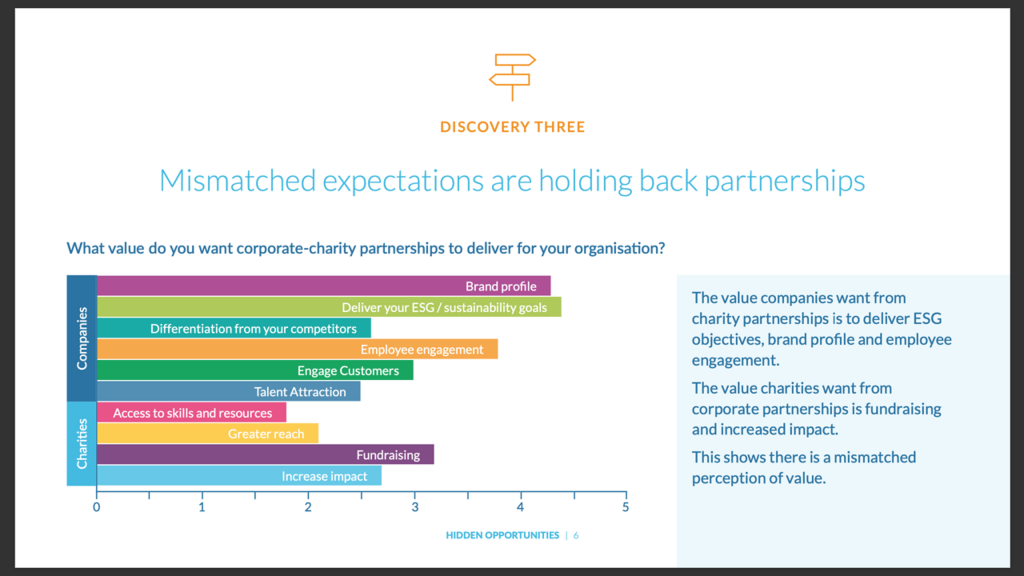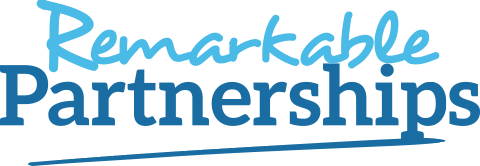A fortnight ago, we launched our new research, “Hidden Opportunities,” which reveals that both companies and charities are missing-out on significant value by not partnering together in a
strategic way.
Today, we want to dig deeper into one really important insight from the research, which shows that mismatched expectations between companies and charities are holding back partnerships.

You can see from the graph above that companies want these partnerships to help them deliver their ESG objectives, increase their brand profile and engage employees. However, charities want fundraising and increased impact. This is the mismatch in expectations.
So, here are our recommendations to overcome these differences.
Commercial benefits
As you can see from the research, companies are focused on commercial benefits from charity partnerships. As a charity, you must understand this. Listening to your prospect or partner on their business objectives is the key to success. If you make your charity indispensable to their business, your partnership will be seen as essential. We recommend when you first meet a prospect you ask, “What are your business objectives?,” then design your partnership to deliver them.
Value not money
The research shows that charities’ top priority is fundraising income, however, companies are rich in resources in many other ways than money – their people skills, experience and knowledge, reach and profile, as well as their spaces. Rather than approaching a company just for money, we recommend you co-create the partnership activity, and discuss what needs you have that they have the skills to fulfil. Some of the most successful partnerships begin by focusing on non-financial support from the company. Network Rail and Samaritans is a great example of this, their partnership began to reduce suicide on the railways, and they launched their campaign #SmallTalkSavesLives. The partnership has now gone on to raise over £2.5million.
Aim long term
The problem is that bringing up money early in any partnership is awkward. Focusing on the short-term goal is likely to sabotage your long-term potential. We recommend you take your time and build an authentic partnership that benefits both parties equally, and the money will come, most likely at a larger level, and for a longer time than you were anticipating. A great example of this is the partnership between NatWest and The Prince’s Trust, where the partnership began with financial skills training for young people who wanted to start their own business, but over the past 17 years has grown significantly to fund more than 86,000 young entrepreneurs get into self-employment.
Put yourself in their shoes
One of the challenges we hear every day is that partnerships are breaking down when a contact moves on, or when the company gets busy. This is because the company are not seeing the charity as an essential part of their business activities. Also the charity puts the blame on to the company that they are becoming more distant. We recommend you put yourself in their shoes. Find out what their challenges are and offer them a solution. Be persistent. If your partnership is valuable to the company, they will come back to you and you can re-ignite the partnership.
Impact reporting
The problem with impact reporting is that charities often only focus on the impact to their service users. However, you should also report on how the partnership has delivered the companies’ business objectives. If you include this impact, you provide evidence that your partnership is indispensable and you make a compelling case for continuing and growing your relationship.
Conclusion
We hope this blog has given you direction to overcome the mismatch in expectations with companies. If you created partnerships with matching expectations your partnerships will be stronger and longer.
If you would like to read the Hidden Opportunities research please click this link.


Leave a comment